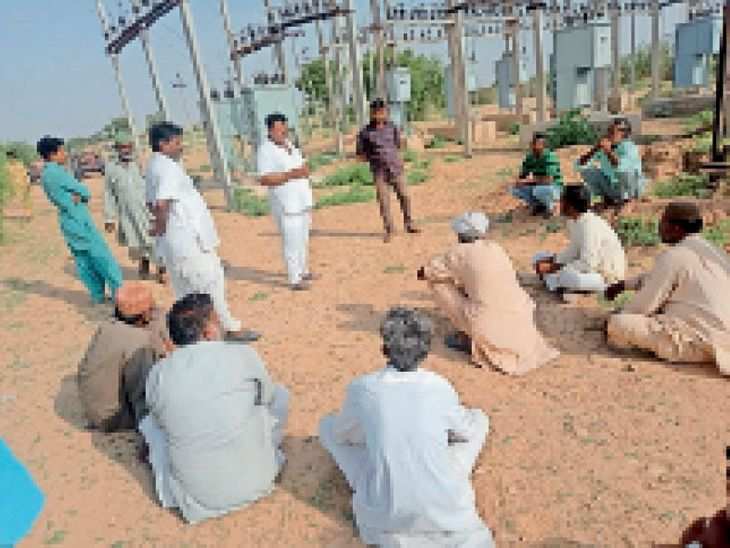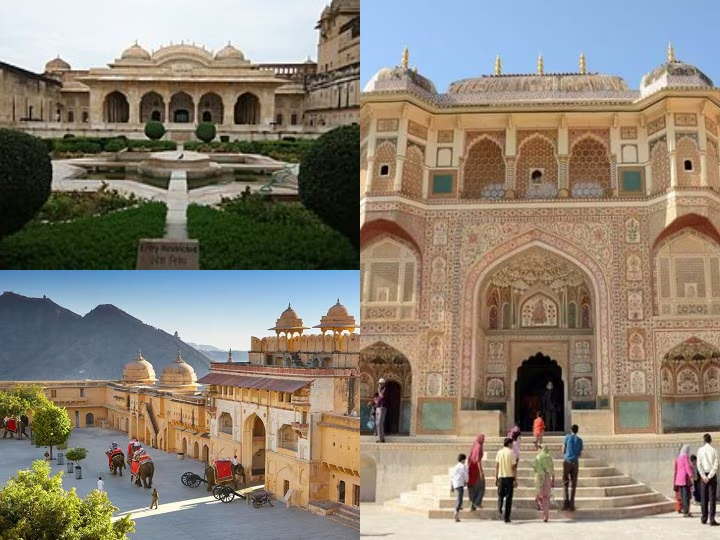Rajasthan News Desk will discuss the world’s oldest geographical structure i.e. Aravalli mountain range. For your information, let us tell you that the Aravalli range is the oldest mountain range of India, which is about 870 million years old. It extends to Rajasthan, Haryana and Gujarat in India as well as Punjab and Sindh in Pakistan.
This 560 km long range of rocky hills extends from northeastern Rajasthan to the southern outskirts of Delhi. The northernmost point of the range reaches Delhi’s border with Haryana, while its southern end extends to Palanpur near Ahmedabad. This mountain range is one of the seven sacred mountains of ancient India and, like the Hindu Kush Mountains, is also known as the Pariyatra or Parijata Mountains due to the presence of the Parijata tree. Come, in today’s video we will introduce you to some interesting facts related to the Aravalli mountain range.
The oldest Aravalli mountain range of India divides Rajasthan into two parts from north to south. Its highest peak is ‘Guru Shikhar’ located in Mount Abu in Sirohi district, which is about 1727 meters high. This mountain range is characterized by dense forests, mainly in the southern region, while the rest of the area is sparse, sandy and rocky. The peaks and ranges of the Aravalli range extend for 10 to 100 kilometres, typically reaching heights of 300 to 900 metres. 80 percent of the Aravalli mountain range, which extends for about 800 km from Delhi to Ahmedabad in the northeast to southwest direction, is located in Rajasthan. Rashtrapati Bhavan situated on Raishela hill in Delhi is also a part of the Aravalli mountain range. The Aravalli range, composed mainly of quartz rocks, is known for mineral deposits such as lead, copper and zinc. Some notable hills within this range include the ‘Jagga Hills’ near Udaipur, the ‘Harshnath Hills’ near Alwar and the ‘Delhi Hills’ near Delhi.
The Aravalli mountain region can be mainly divided into three major sub-regions, which include Southern Aravalli Region, Central Aravalli Region and Northern Aravalli Region.
If we talk about Southern Aravalli region, it includes Sirohi, Udaipur and Rajsamand districts. Talking about the specialty of this region, its hilly areas, dense and high Aravalli ranges are its main parts. Many of the highest peaks of the Aravalli mountain range can be found here, including Mount Gurushikhar, Mount Gurushikhar is the highest peak in Rajasthan with an elevation of 1722 metres, it is located in the Mount Abu region of Sirohi district. Other notable peaks in the region include Ser, Achalgarh, Delwara, Abu and Rishikesh. The highest peak of Udaipur-Rajsamand region is Jarga Mountain whose height is 1431 meters. Additional ranges in the area include Kumbhalgarh at 1224 m, Leelagarh at 874 m, Kamalnath Hills at 1001 m and Sajjangarh at 938 m. To the northwest of Udaipur is the Bhorat Plateau, which lies between Kumbhalgarh and Gogunda.
The Central Aravalli region is mainly located in Ajmer district. Additionally, the region also includes narrow valleys, flat areas and mountain ranges. To the southwestern part of Ajmer is Taragarh and to the west are the spiral mountain ranges known as Nag Pahar. Within Beawar tehsil, the Aravalli range has four passes, known as Bar, Parveriya and Shivpur Ghats, Sura Ghat Pass and Debari.
The Northern Aravalli region extends to the districts of Jaipur, Dausa and Alwar. In this particular region, the Aravalli ranges spread out rapidly rather than forming a continuous chain. These ranges include the Shekhawati Hills, Toravati Hills, Jaipur and Alwar Hills. The average height of the hills in this region ranges from 450 to 750 metres. Notable high peaks of this state include Raghunathgarh in Sikar district with a height of 1055 m, Bairath of Alwar with a height of 792 m and Kho of Jaipur with a height of 920 m. Other major peaks also include ‘Jaigarh’, ‘Nahargarh’, Alwar Fort and Bilali.
How Aravali saved Delhi from becoming a desert
The Aravalli hills, stretching from Delhi to Gujarat, have been preventing the intense and scorching heat and the hot and deadly desert winds from the west from directly reaching Delhi-NCR for centuries. If this had not happened then Delhi too would have crossed 50 degrees long ago on the lines of Rajasthan. Due to Aravali, the temperature of NCR remains 6 to 8 degrees lower. Former meteorologist Dr. BL Dattu says that the earth’s surface gets heated very little in the high mountains. Due to the Earth’s surface receiving very little heat, the amount of energy reflected by it is also less. Due to which the atmosphere of high mountains gets heated relatively less due to the long waves reflected from the earth’s surface. The summer monsoon coming from the Arabian Sea passes over Rajasthan, but due to storing huge reserves of moisture, the temperature of the winds passing through here decreases.
The Aravalli mountain range has abundant natural resources and minerals. The Aravalli range also acts as a barrier against the expansion of the western desert. It serves as the source of several major rivers including the Bana, Luni, Sakhi and Sabarmati. Aravali is called a storehouse of minerals due to the presence of metallic minerals like iron ore and manganese. Apart from this, this mountain range is also a refuge for various tribes like Bhil, Garsi, Kanjar, Damor and Kathodi. It is also home to all the national parks and wildlife sanctuaries of the Aravalli region.
While the Aravalli mountain range is known as the abode of sages and saints, on the other hand it also serves as the workplace of warriors and a nurturer of religion, art and culture. Apart from this, it has huge reserves of minerals like marble, granite, tungsten, calcite, limestone and wollastonite. About 31 percent of the land area of this mountain range is covered with forests, which is home to a variety of trees such as salar, acacia, dhokra, siras, tendu, khair, kumtha, baheda and bamboo. The Mount Abu Sanctuary is home to a diverse wildlife including panthers, bears, wild boars, langurs, wolves, foxes, jackals, rabbits, wild fowl, wild cats, badgers, pheasants, quails and bulbuls. The vibrant culture of the tribal Garasia community in the district is evident in their colorful costumes, songs and dances. The dance performed collectively by women is especially famous here. Jiraval is home to ancient Jain temples which are over 2000 years old. Other notable temples in Sirohi include Sarneshwar Temple, Mirpur Temple and Sarvadharma Temple.
Treasure of history found in Aravalli hills
In the year 2021, researchers had found a treasure of history in the Aravalli hills. According to the Archeology Department, 25 lakh years old Stone Age carvings were found in the Aravali hills. Another door to history has opened after new graffiti and hand and foot prints of humans and animals carved on quartzite rocks were recently discovered in Badshahpur Tether village of Sohna, Gurugram. According to archaeologists, these belong to the Paleolithic period or Stone Age. This Stone Age site is on top of a hill and is only 6 kilometers from Mangar, where Stone Age cave paintings were discovered in 2021. These stone carvings appear to be ancient and may date from the Palaeolithic era, which is 2.5 million years old and may be as old as 10,000 years. The Archeology Department had claimed the discovery of Palaeolithic paintings in the Aravalli hilly area in the year 2021 after the discovery of 5,000 hectares in Mangar area of Faridabad. During the exploration here, the department found many cave paintings along with rock shelters and tools.
Archaeologists claim that the historical objects found during the discovery included pebble and flake-based tools. This meant that stone tools were made here. Overall, this ‘Acheulian’ industry can be called the first tradition of standardized tool-making. The latest site, spread over a radius of 2 kilometres, was recently discovered by Sunil Harsana, an ecologist and wildlife researcher. Harsana informed the Archeology Department about the Stone Age carvings and recommended a thorough investigation. Recently a team of archaeologists also confirmed this and said that these rocks actually belong to the Paleolithic period and many tools and implements used for making paintings on stones were also found at the Stone Age site. Banani Bhattacharya, Deputy Director of Haryana’s Directorate of Archeology and Museums, said that this gives us an opportunity to see how humans made early tools. Most of the carvings are of animal paws and human footprints.


